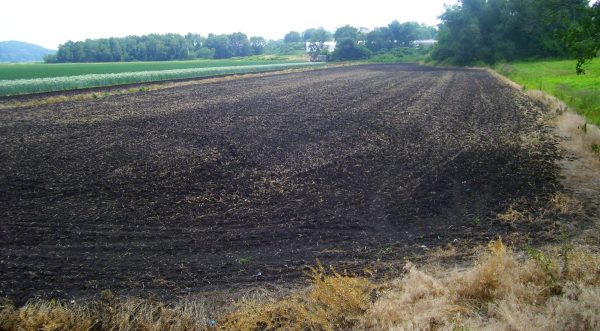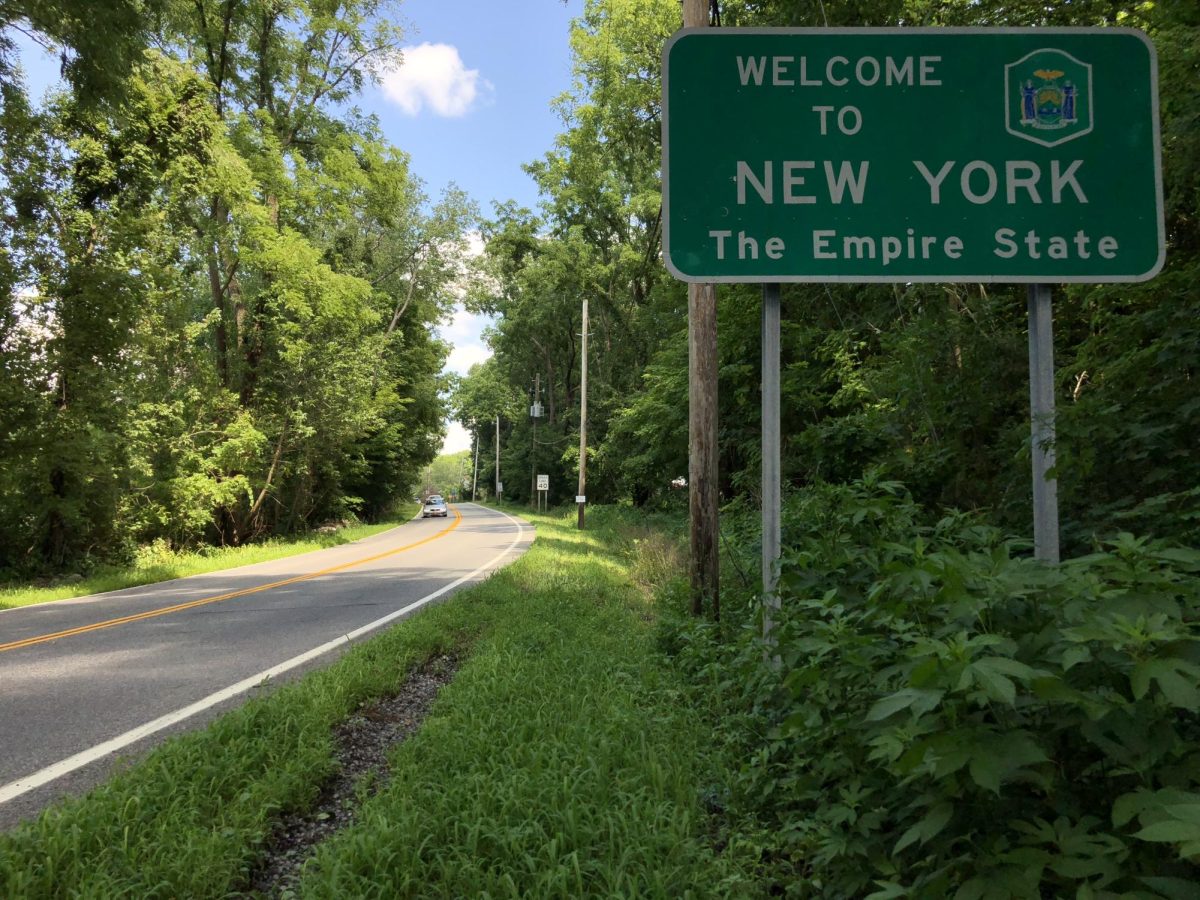“We don’t serve Trump supporters here. Get out of here and never come back!” was the response given by Cancun Inn business owner Israel Campos according to Esther Levy, after she walked into the establishment wearing a MAGA hat and Trump pin. In 2016, Esther Levy and retired judge Alvin Goldstein were reportedly kicked out of this Mexican-American owned business because they were Trump supporters. This event stained the village of Warwick, New York, and came as a bitter reminder of the decades-worth of racism surrounding locals.
In 2017, a high school boy yelled “white power!” to his school’s new black principal, a café owner posted about Hitler being an “actually very good person” in 2021, and swastikas were drawn outside a cemetery by white nationalist groups in 2020. Warwick, New York has had its share of racism – to an extreme. But how deep does this issue run in the town as a whole? While some of the villagers of Warwick may be criticized for their racism, the town’s surrounding areas are not stained by it.
To drive from New York City to Warwick, you have to go through the Hudson Highlands, the Taconic mountains, and through the Appalachian mountains. Although it is unlikely you will cross through all the natural barriers at the same time, they’ll contribute massively to the atmosphere of a small road-trip because of the thriving wildlife — all less than an hour away from the financial capital of the world.
It will not take long to discover that the stigma surrounding this Orange County town is fixated within the village. Towards the outskirts, Warwick transforms into a stunning display of peaceful coexistence with nature whilst the village center remains shrouded in controversy.
In autumn, thousands of trees turn bright reds and oranges over the hilly landscape. During the spring, hawks and falcons fill the clear blue skies. You might even be lucky enough to see the world-famous peregrine falcon, earth’s fastest animal. Owls take over the soundscape after birds at night and frogs croak endlessly.
On the weekends, you can smell your neighbor starting the breakfast grill, with hickory smoked bacon and eggs and the signature charcoal scent. The sun rises above the mountain backdrop lightly glazing the earth, giving you time to walk outside to feel that cool morning breeze with a warm cup of coffee. The foggy aroma in the air — still fresh in the early morning — completes the scenic view of your neighborhood straight from your front porch.

Warwick is lucky enough to be home to the Black Dirt Region — an area of extremely fertile and rich soil in New York state. It is some of the most fertile soil in the world, second only to the Florida Everglades and comparable to the Chernozem soil in Ukraine. The town takes advantage of this by growing onions so rich and flavorful that they can be eaten like apples.
Coincidentally, apples are also the staple of agriculture in Warwick. Applefest is an annual October festival in Warwick, where residents compete in apple picking at the Orchards, apple-pie baking competitions, and apple-pie eating contests, with almost a hundred street vendors taking part in the festival.

The food in Warwick beats many expectations. Fantastic Italian restaurants are easy to come by, and equally as common are American restaurants with dishes like Southern roast beef and mac and cheese. Delis and bodegas reminiscent of those in the city owned by Latin Americans are an uncommon sight in Warwick considering the Hispanic/Latino minority; however, those that exist are popular. The chopped cheese sandwiches sold by the few bodegas taste incredible for a small suburb and are on-par with the seasoning of even those in the Bronx.
There is no sign of white-nationalist recruitment ads, swastikas in cemeteries, or Hitler-praising café owners anywhere in view. Visitors get to see how the people of Warwick really are underneath the racist incidents that have occurred over the past few years. The lively culture of the town is apparent.
Warwick is dotted with old brick and wooden homes. The town is not underdeveloped or overdeveloped, nor does it mimic the copy-and-paste style home architecture seen in western suburbs. Warwick is a reminder of the older, traditional ways of building that will remind you of an aging American movie.
The Warwick Reformed Church (WRC) is a prime example of the town’s long history. Erected in 1804, the Church withstood 173 years of service until a fire wrecked most of its original construction. In 1979 the church was rebuilt, maintaining much of its original Romanesque style. Today it still stands as a site of important religious practice for the Reformed Church in America.
Despite its proximity to New York City, Warwick is virtually untouched by large corporations, with the nearest McDonald’s 10 miles from the village center, and more than 30 minutes away for the northernmost parts of Warwick by car. There is only a single Burger King and Dunkin Donuts within town-lines, and the nearest Walmart is the next town over. Small businesses reign supreme in their absence.
When I traveled to Warwick, it was a rainy morning. I had to go through the route leading towards Bear mountain. The sky was a bright gray, and the clouds were beginning to dissolve, but raindrops were still loud as they hit the metal roof of the car. The roads were reflecting the clouds with crystal clarity, and the air smelled earthly.
The smell of rain is iconic to most childhoods; it was the time when you would go out to play with your friends in the park or backyard, ignoring the storm brewing nearby. That same smell in the city pales in comparison to the rainy scent in Warwick, fueled by its dizzying amount of trees. There were points on the drive that were so dark, it was hard to see anything beyond the sidewalk because of the thick trees that grow, but these points are hard to see near the roads, since most of the trees grow closer to the valleys.
Mr. Randy, an older man, has lived in Warwick for over 30 years. When he moved in, he planted a tree alongside his small hillside house. The tree sapling, once the size of a palm, is nearly 30 feet tall. He owns a chicken coop in his backyard, where he invited me to see his chickens. He spoke in a soft tone – a recurring theme of the town – and despite his old age, he had a playful personality, exchanging jokes with me as we spoke to one other.
“They can lay 8 eggs a day [in total], and it saved me a lot of money during the quarantine. I don’t remember the last time I bought eggs. They [the chickens] give me all I need. Actually I’m getting a new shipment of chickens next week.”
He mentioned something to me about eating the chickens, too, but I was too focused on not dropping the chicken he let me carry to ask. Holding the chickens was an enjoyable experience up until one of the chickens started staring at me for an uncanny amount of time. Last summer, Mr. Randy was kind enough to offer his old playground set to his neighbors as a gift. His grandkids occasionally come by to visit, but they don’t play on the set as much as they’re getting older, so instead of trashing the set, he gave it away for free.
This is one small example of the warmth of Warwick’s people. When it comes to honoring veterans, the town is a shining beacon of example. They treat their veterans with all the respect in the world with dinners and celebrations.
This is not the Warwick you’d see in headlines or on top stories outside of the local area. It takes time to know a town like Warwick. It is so easy to get swooped up by the attention-grabbing headlines that many don’t realize are dated.
That’s not to say Warwick isn’t still plagued by acts of racism. Unfortunately there still remain incidents of racism that continue to plague Warwick and poorly affect the quality of life of minorities, especially African-Americans. However there are growing efforts to combat racism by school districts, such as the Warwick Valley School District, and others. People living in smaller communities are willing to help each other out. During the 2020 marches for Black Lives Matter, students at the local school district marched in the village center in support of BLM. The local newspaper even reached out to minority students and families to encourage them to speak-up about their experiences on more than one occasion and it continues to do so.
Warwick is a small town in the southern tip of Orange County, New York. Because of its small size, a population of less than 32,000, with a median age of about 44, the town is ignored by most people. Whether it is because of the ongoing issues with racism, or because of its natural wonders and serene atmosphere, the town is keeping within its borders. Yet Warwick can not be ignored. Acts of racism are still an unfortunate truth and problem that the town has to face, but Warwick has redeeming qualities to it that still make it a place worth a road trip.
This is not the Warwick you’d see in headlines or on top stories outside of the local area. It takes time to know a town like Warwick. It is so easy to get swooped up by the attention-grabbing headlines that many don’t realize are dated.

